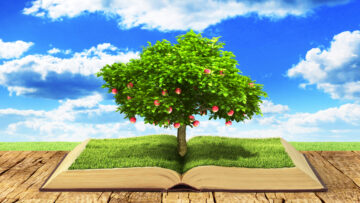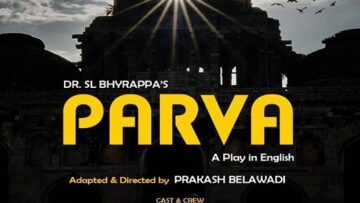Arun Krishnan has made a notable contribution to Indian writing in English with his historical fiction, The Varaha’s Vengeance. This second in a trilogy is set during the illustrious era of the Chalukyas and Pallavas. Reflective of contemporary trends, Krishnan transitions to literature from a background in science, technology, and academia. His extensive international reading, awareness of current affairs, and cultural sensitivity are palpable in his writing.
The narrative delves into the conflict between Chalukya King Pulikeshi II and Pallava Kings Mahendra Varman and Narasimha Varman. This epoch is pivotal in the civilizational history of Bharat. The Pallavas governed the Tamil regions for over 600 years, starting around 200 BC, with their period of glory commencing under Mahendra Varman in 600 AD. The Chalukyas, ruling from 550 AD to nearly 1200 AD, reached their zenith around the same time with Pulikeshi II’s ascent. Thus, South India became a battleground for these two formidable powers. The rivalry between Pulikeshi II and Narasimha Varman, also known as Mamalla—the great wrestler—culminated in significant historical confrontations. Despite ongoing conflicts, this period was a defining moment for South Indian civilization and the broader Indian subcontinent, echoing the legacy of the preceding Gupta period which ended around 550 AD. While the Pallavas dominated below the Kaveri, the Chalukyas, and later the Rashtrakutas, held sway from the Kaveri to the Narmada, and occasionally beyond during certain Rashtrakuta reigns. This era of prosperity, culture, and happiness influenced the larger Indian ethos for centuries.
Historical Fiction: An Indian Tradition
Bharateeya Bhashas have long embraced historical fiction, a genre that played a crucial role during the National Movement and the renaissance of national consciousness. Our ancestors anchored this revival in ancient Indian culture and history, making historical fiction a beloved genre among the newly educated middle classes of India.
In contrast, historical fiction in English was sparse, both before and after independence. The anglicised elite of India, disconnected from their cultural roots, often indulged in literature that perpetuated colonial consciousness. However, recent decades have seen a resurgence of Bharateeya themes in English literature. A segment of society that has retained its cultural roots has entered the English literary sphere, while another, distanced from its heritage, is seeking a return after recognizing the colonial consciousness that envelops them.
As a result, there has been a notable resurgence of historical fiction in contemporary times, particularly in the last decade.
Appreciating Historical Fiction
Before we begin an appreciation of the novel – a critical question is waiting to be answered. What criteria should guide the appreciation of historical fiction? While it must possess the qualities of a compelling novel, it also bears additional aesthetic responsibilities, particularly within a Bharateeya context. These unique questions range from ground level details to cultural insights.
- Historical Research: Is the novel underpinned by thorough historical research? Does it construct its narrative with meticulous historical detail, bringing the era to life authentically?
- Faithfulness to History: Does the novel remain faithful to historical facts without distorting them for artistic convenience?
- Bringing History to Life: Does it artistically and aesthetically animate history? Does the historical detail enhance rather than burden the narrative? Is there sufficient imaginative presentation of the historical context?
- Characterization: Are the characters richly drawn and realistic? Does their development, real or imagined, align with the historical context?
- Novelization: Is the historical narrative woven seamlessly into a cohesive and engaging novel? Does history become an integral piece of art within the story?
- Civilizational Novel: Does the novel offer a true representation of its time? Does it provide an integrated view of the era’s past, present, and future? Does it provoke reflection on the broader culture of the nation? Does it offer new insights from a civilizational standpoint?
It isn’t essential for every historical novel to have all these dimensions. However, this is the spectrum of possibility. A novel could either dwell deep into a few aspects or cover many with a brilliant composition. These questions will be dealt with in the subsequent sections.
What the Novel achieves
There are 5 unique aspects of the novel that make it a good reading experience.
- An exclusive narrative strategy
- A teasing suspense
- Extensive research
- Conversational narrative
- Life breathing women characters
If there is one thing to be called out in the novel it is its narrative strategy. While Pulikeshi II and Narasimha Varman are central to the historical backdrop, they are not emphatically present in the story explicitly. Their presence is sparse. Instead, the narrative is constructed around characters and situations that are their making. This approach brings the era to life through the experiences of lesser-known figures, avoiding over-reliance on towering personalities. This method, though less common, offers a refreshing exploration of historical times.
The novel’s suspenseful narrative, a requisite for a political historical novel, is skillfully maintained without being overdone, making it engaging. Although set against the backdrop of war, the novel highlights the unique nature of Indian warfare, often characterised by strategic one-upmanship and minimal destruction. This distinctly Indian element is well portrayed, enriching the narrative. The accessible writing style, marked by playful conversations, ensures the novel evolves at a life-like pace. Despite the risk of losing reader interest with a gradual pace, the consistent suspense and curiosity sustain engagement.
The extensive research underpinning the novel connects disparate historical details into a cohesive narrative, blending historical accuracy with imaginative storytelling. This balance is achieved seamlessly, bringing history to life without overwhelming the reader with details. The conversational narrative breathes life into characters, an innovative approach for a novel centred on battles. This method succeeds in animating characters on the surface while the core narrative revolves around the Chalukya-Pallava conflict. The interplay between the conversational surface and the historical core is executed with finesse. It is indeed the latter driving the former but not apparent to a reading experience but only to a distanced analysis.
The introduction of female characters such as Tharamai, Sanghamitra, and Indumathi enriches the narrative. Representing a princess, a soldier, and a householder respectively, they embody diverse facets of life and uphold a sense of Dharma. Their journeys of sacrifice resonate with the true spirit of Bharateeya life. Indumathi, in particular, exemplifies the nuanced pursuit of Dharma, navigating complex paths with grace. Plot and situations assume a different life when they appear. They not only transform themselves, but others around them in their stretched pursuits of goals without abdicating righteousness.
What the Novel could have explored
While the conversational narrative is a strength, it also limits the novel by excluding other narrative methods that could enrich the story. Incorporating diverse narrative elements could break monotony and offer deeper insights into various dimensions of life around the battles. Reflective and silent tones, for instance, could emphasise different phases of the plot and character journeys.
Character growth is uneven; some characters evolve exceptionally, while others remain static. All characters should exhibit psychological progression, reflecting their journeys. Greater cultural differentiation between characters from different kingdoms could highlight historical and cultural nuances more effectively.
The novel touches on the civilizational roles of the Chalukyas and Pallavas, but further exploration of their historical, social, cultural, and political transformations would enhance the narrative. Insights into the broader journey of Bharatavarsha during this period could provide a richer context.
Occasionally, the focus on battle and war becomes overwhelming. Introducing elements from other aspects of life could offer artistic relief and a fuller portrayal of the era.
Conclusion
A novel is a complex interplay of characterization, narrative, lyrical quality, metaphorical richness, and life perspective. The Varaha’s Vengeance excels in its narrative and characterization, particularly in its innovative conversational style. The lyrical dimension, a challenge given the substance of the novel is in Bharateeya Bhashas but the narrative is in English, is partially achieved. The novel’s success lies in its rich historical research, faithfulness to history, and imaginative storytelling. It brings characters to life and integrates historical elements into a cohesive and aesthetic whole. While it could delve deeper into civilizational insights and carving metaphors, the novel remains a significant addition to Indian historical fiction, offering a vivid portrayal of a pivotal era.
Disclaimer: The opinions expressed in this article belong to the author. Indic Today is neither responsible nor liable for the accuracy, completeness, suitability, or validity of any information in the article.











